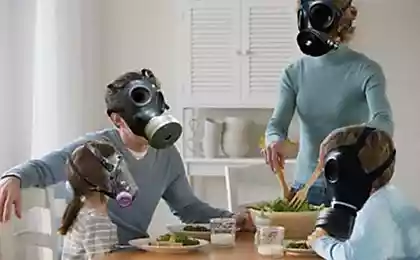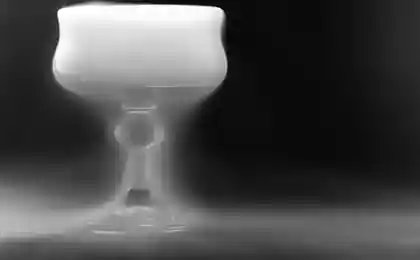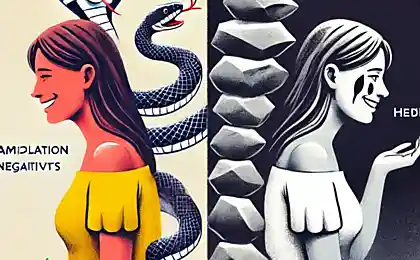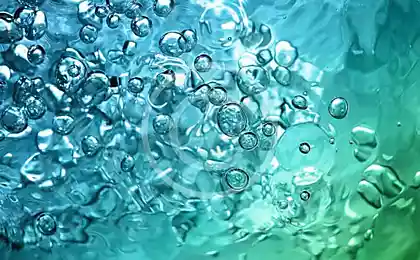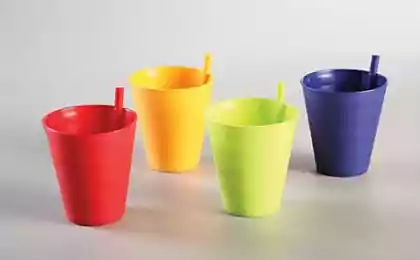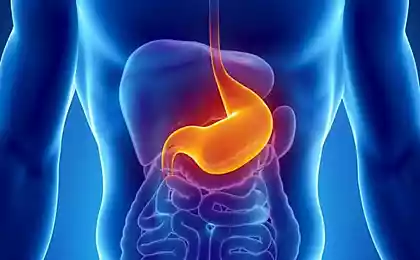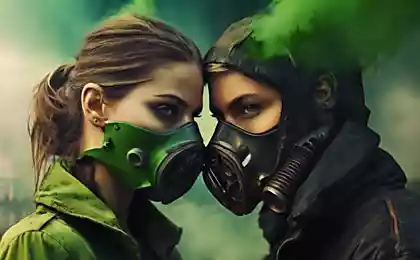235
Top Ten Most Toxic Substances to Stay Away from
In 2011, US advertisers spent an incredible $144 billion to encourage people to make unnecessary purchases. We provide you with a list of 10 toxic substances that are absolutely unnecessary in everyday life, you can safely get rid of them right now! Not only will you put your home in order, but you will also notice how well you feel by eliminating household items that contain toxic chemicals that pollute the air, your food, and your body.
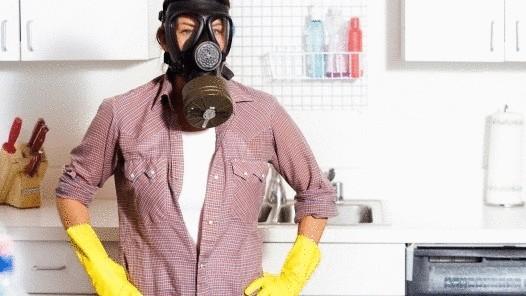
1. PVC: In relation to the environment, vinyl plastic is the worst of all plastics. It is banned in more than 14 countries, including the entire European Union. PVC, also known as vinyl, is used in the manufacture of floors, wall coverings, and toys. In most cases, it contains phthalates (can lead to hormonal disorders) and lead (a powerful neurotoxicant), which, when evaporated, pollute the air in your home, and as a result, you are forced to breathe. Try not to buy products containing PVC by carefully reading the labels on the packages, and avoid #3, the international recycling symbol (usually found at the bottom of the product).
2. Fragrances: Chemical flavors in everyday products, such as air fresheners or perfumes, can cause various allergic reactions, including the development of bronchial asthma. Some chemicals mimic estrogen, which in turn can increase the risk of breast cancer because they stimulate its cells to grow and divide. For example, diethyl phthalate (DEP) is absorbed through the skin and can accumulate in human adipose tissue. Phthalates are carcinogens and hormone destroyers, they are increasingly directly associated with disorders of the human reproductive system. To fully protect yourself, give preference to buying products marked “fragrance-free”, i.e. do not contain chemical flavors, or use products based on natural flavors such as essential oils.
3. Canned food: You may be wondering why canned goods are on the list of toxic foods, but there is no mistake. The chemical Bisphenol-A (BPA) is applied to the inner layer of cans and beverage bottles. Most experts believe that these are the main sources of this dangerous substance, the effects of which are associated with early puberty, cancer, obesity, heart disease, depression in young girls and many other serious diseases. Many brands today are trying to avoid using BPA. But beware: some companies have switched to Bisphenol C (BPS), a cousin of BPA, which is also linked to many of the diseases listed above. In order to protect yourself, choose fresh, frozen, dried products or goods in glass jars.
4. Cleaning products: Just think about whether it is strange to try to clean your stoves, floors, furniture surface, bathroom and toilet using highly toxic chemicals. Caustic, corrosive cleaners such as various alkalis and acids found in liquid cleaners, oven cleaners and acid toilet cleaners are the most dangerous detergents as they can easily burn a person’s skin, eyes and internal connective tissues. You won’t have much trouble switching to simple and effective non-toxic cleaners or trying to create your own. You will not be missing toxic fumes in your home!
5. Pesticides: These are a huge category of products, but they deserve attention in full as they are extremely toxic to humans. Pesticides were created in order to destroy certain types of living organisms that are undesirable to humans. But, solving your problems with pests, you will have to face unpleasant consequences, namely, with residual poisons that linger on the surface, pollute the air and are able to settle on the surface of carpets for a long time. There are many alternative non-toxic ways to eliminate pests and weeds that do not require the use of hazardous chemicals.
6. According to The Story of Bottled Water, Americans buy a billion and a half bottles of water each week. Most people prefer bottled water, thinking that they avoid any impurities and bacteria that may be present in tap water. For the most part, they're wrong. Bottled water can be contaminated equally or even more than tap water. In fact, half of the bottled water is tap water, just packaged in plastic, which in turn is capable of releasing dangerous chemicals into the water, and for all this pleasure you also pay an inflated price. In addition, from production to disposal, bottled water creates a huge amount of pollution, making our water even less drinkable. Do yourself and the world a favor and invest in reusable stainless steel bottles and buy a water filter home.
7. Lead in lipstick: Can you believe that lead, a known neurotoxin that can have dangerous effects on the human body, is found in women’s lipstick? A study conducted by the Food and Drug Administration (FDA) found lead in 400 lipstick subjects that doubled their levels compared to the organization’s previous study. There is no safe level of lead exposure. Pregnant women and children are at particular risk because lead can interfere with normal brain development. To find safe lipstick, as well as other personal care products such as shampoos and lotions, check the Skin Deep Database database, which has information on more than 75,000 cosmetic products from global brands.
8. Non-stick cookware: Studies show that perfluorinated compounds or “teflon chemicals” (PFCs), which make coatings resistant to contamination and adhesion, can provoke cancer and cause low birth weight in newborns. PFCs are incredibly persistent and can be found all over the world, even in polar bears. Teflon coating is used not only in dishes, but also in popcorn bags for microwave ovens, pizza boxes, as part of some dental threads, furniture and clothing. To stay away from PFCs, avoid products made with Teflon chemicals. Try to carefully read the list of ingredients, if there is something in the composition that begins with “fluoride” or “perfluorine”, you can safely return the product to the store shelf.
9. Triclosan: This is an antibacterial agent that is part of soap, toothpastes, mouthwash, deodorants and even clothing. Studies have shown that triclosan can harm the human immune system, which in turn makes us more prone to developing various types of allergies and reduces muscle strength in both humans and animals. The U.S. Food and Drug Administration advises consumers to read labels carefully and not to buy products containing triclosan, and also recommend using ordinary soap for washing. Instead of using antibacterial hand sanitizers with triclosan, choose an alternative product that contains at least 60 percent alcohol.
10. Oil paints and enamel: There are 300 toxic chemicals and 150 carcinogens that can be present in oil paint, according to a Johns Hopkins University study. Are you still interested in covering your walls and furniture with this shit? We hope not. Take a closer look at water-based paints, ideal ones that have low or zero levels of volatile organics.
Don’t buy into advertising stunts, be reasonable consumers, read labels carefully and be healthy!
Source:ecoveggie.ru
Source: /users/1077

1. PVC: In relation to the environment, vinyl plastic is the worst of all plastics. It is banned in more than 14 countries, including the entire European Union. PVC, also known as vinyl, is used in the manufacture of floors, wall coverings, and toys. In most cases, it contains phthalates (can lead to hormonal disorders) and lead (a powerful neurotoxicant), which, when evaporated, pollute the air in your home, and as a result, you are forced to breathe. Try not to buy products containing PVC by carefully reading the labels on the packages, and avoid #3, the international recycling symbol (usually found at the bottom of the product).
2. Fragrances: Chemical flavors in everyday products, such as air fresheners or perfumes, can cause various allergic reactions, including the development of bronchial asthma. Some chemicals mimic estrogen, which in turn can increase the risk of breast cancer because they stimulate its cells to grow and divide. For example, diethyl phthalate (DEP) is absorbed through the skin and can accumulate in human adipose tissue. Phthalates are carcinogens and hormone destroyers, they are increasingly directly associated with disorders of the human reproductive system. To fully protect yourself, give preference to buying products marked “fragrance-free”, i.e. do not contain chemical flavors, or use products based on natural flavors such as essential oils.
3. Canned food: You may be wondering why canned goods are on the list of toxic foods, but there is no mistake. The chemical Bisphenol-A (BPA) is applied to the inner layer of cans and beverage bottles. Most experts believe that these are the main sources of this dangerous substance, the effects of which are associated with early puberty, cancer, obesity, heart disease, depression in young girls and many other serious diseases. Many brands today are trying to avoid using BPA. But beware: some companies have switched to Bisphenol C (BPS), a cousin of BPA, which is also linked to many of the diseases listed above. In order to protect yourself, choose fresh, frozen, dried products or goods in glass jars.
4. Cleaning products: Just think about whether it is strange to try to clean your stoves, floors, furniture surface, bathroom and toilet using highly toxic chemicals. Caustic, corrosive cleaners such as various alkalis and acids found in liquid cleaners, oven cleaners and acid toilet cleaners are the most dangerous detergents as they can easily burn a person’s skin, eyes and internal connective tissues. You won’t have much trouble switching to simple and effective non-toxic cleaners or trying to create your own. You will not be missing toxic fumes in your home!
5. Pesticides: These are a huge category of products, but they deserve attention in full as they are extremely toxic to humans. Pesticides were created in order to destroy certain types of living organisms that are undesirable to humans. But, solving your problems with pests, you will have to face unpleasant consequences, namely, with residual poisons that linger on the surface, pollute the air and are able to settle on the surface of carpets for a long time. There are many alternative non-toxic ways to eliminate pests and weeds that do not require the use of hazardous chemicals.
6. According to The Story of Bottled Water, Americans buy a billion and a half bottles of water each week. Most people prefer bottled water, thinking that they avoid any impurities and bacteria that may be present in tap water. For the most part, they're wrong. Bottled water can be contaminated equally or even more than tap water. In fact, half of the bottled water is tap water, just packaged in plastic, which in turn is capable of releasing dangerous chemicals into the water, and for all this pleasure you also pay an inflated price. In addition, from production to disposal, bottled water creates a huge amount of pollution, making our water even less drinkable. Do yourself and the world a favor and invest in reusable stainless steel bottles and buy a water filter home.
7. Lead in lipstick: Can you believe that lead, a known neurotoxin that can have dangerous effects on the human body, is found in women’s lipstick? A study conducted by the Food and Drug Administration (FDA) found lead in 400 lipstick subjects that doubled their levels compared to the organization’s previous study. There is no safe level of lead exposure. Pregnant women and children are at particular risk because lead can interfere with normal brain development. To find safe lipstick, as well as other personal care products such as shampoos and lotions, check the Skin Deep Database database, which has information on more than 75,000 cosmetic products from global brands.
8. Non-stick cookware: Studies show that perfluorinated compounds or “teflon chemicals” (PFCs), which make coatings resistant to contamination and adhesion, can provoke cancer and cause low birth weight in newborns. PFCs are incredibly persistent and can be found all over the world, even in polar bears. Teflon coating is used not only in dishes, but also in popcorn bags for microwave ovens, pizza boxes, as part of some dental threads, furniture and clothing. To stay away from PFCs, avoid products made with Teflon chemicals. Try to carefully read the list of ingredients, if there is something in the composition that begins with “fluoride” or “perfluorine”, you can safely return the product to the store shelf.
9. Triclosan: This is an antibacterial agent that is part of soap, toothpastes, mouthwash, deodorants and even clothing. Studies have shown that triclosan can harm the human immune system, which in turn makes us more prone to developing various types of allergies and reduces muscle strength in both humans and animals. The U.S. Food and Drug Administration advises consumers to read labels carefully and not to buy products containing triclosan, and also recommend using ordinary soap for washing. Instead of using antibacterial hand sanitizers with triclosan, choose an alternative product that contains at least 60 percent alcohol.
10. Oil paints and enamel: There are 300 toxic chemicals and 150 carcinogens that can be present in oil paint, according to a Johns Hopkins University study. Are you still interested in covering your walls and furniture with this shit? We hope not. Take a closer look at water-based paints, ideal ones that have low or zero levels of volatile organics.
Don’t buy into advertising stunts, be reasonable consumers, read labels carefully and be healthy!
Source:ecoveggie.ru
Source: /users/1077
